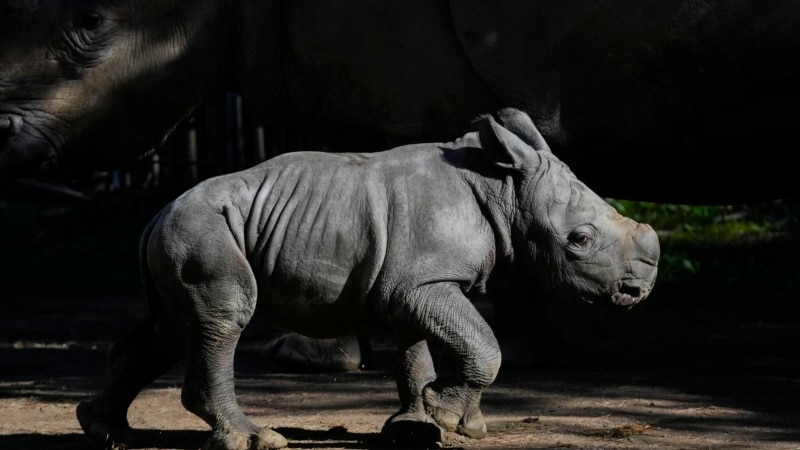A zoo in Chile on Tuesday presented “Silverio,” the third white rhino calf born in South America, an endangered species of which there are only about 10,080 specimens left in the world.
Born on June 20 and already weighing almost a ton, Silverio is the third baby for Oliver and Hannah, the white rhinos who arrived at the Buin Zoo in Santiago from South Africa in 2013, with the aim of contributing to the conservation of the species, explained representatives of the zoo.
Silverio is the ninth rhino to be born in captivity worldwide in the past 12 months, making it a “tremendous contribution to the conservation” of this species, the zoo’s director and founder, Ignacio Idalsoaga, told AP.
“There are several zoos in Latin America that have rhino pairs and they have not managed to reproduce. We are already on our third birth, unique in Latin America. This year only eight rhinos have been born, so we are contributing with a ninth specimen to a species that is few in the wild,” he said.
After twelve days in confinement for medical care, Silverio took his first steps in the outside world today and is “completely healthy,” although he will continue to be closely monitored by the team of veterinarians.
“Zoos are becoming the true modern arks of modern times. In essence, we are the ones who are preserving the genetics of these species that are disappearing,” said Idalsoaga.
Native to southern Africa, the white rhino is considered a species “near threatened” with extinction by the IUCN Red List of Threatened Species. According to the institution, there are only 10,080 specimens of these giant mammals left in the world, of which 808 are in zoos.
Because of their long reproductive cycles – each female only gives birth to one calf at a time after a gestation period of around 18 months – it is estimated that only a maximum of 17 rhinos are born each year in parks worldwide. Breeding these animals in captivity is particularly challenging because more than one male is often needed to stimulate competition.
According to the International Union for Conservation of Nature (IUCN), the main threats to white rhinos today are the destruction of their natural habitat and indiscriminate hunting, which claims the lives of nearly 1,000 specimens in the wild each year.
“They are animals that are unfortunately killed for their horn, which is an element widely used in Asian culture as an aphrodisiac or to cure illness” and “this is leading to the death of almost a thousand specimens every year,” said the director of the Buin Zoo.
Connect with the Voice of America! Subscribe to our channels Youtube, WhatsApp and the newsletter. Activate notifications and follow us on Facebook, X and Instagram.








![[Img #73880]](https://thelatestnews.world/wp-content/uploads/2024/09/Why-Smartwatches-Are-Essential-for-Busy-Professionals-150x150.jpg)




Add Comment